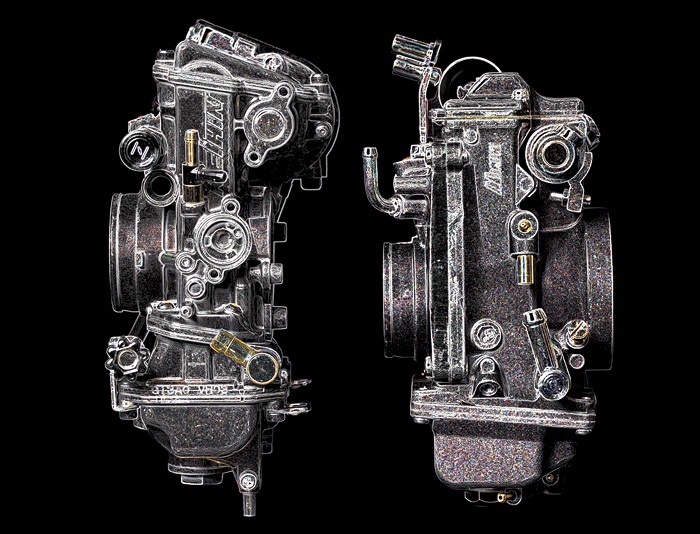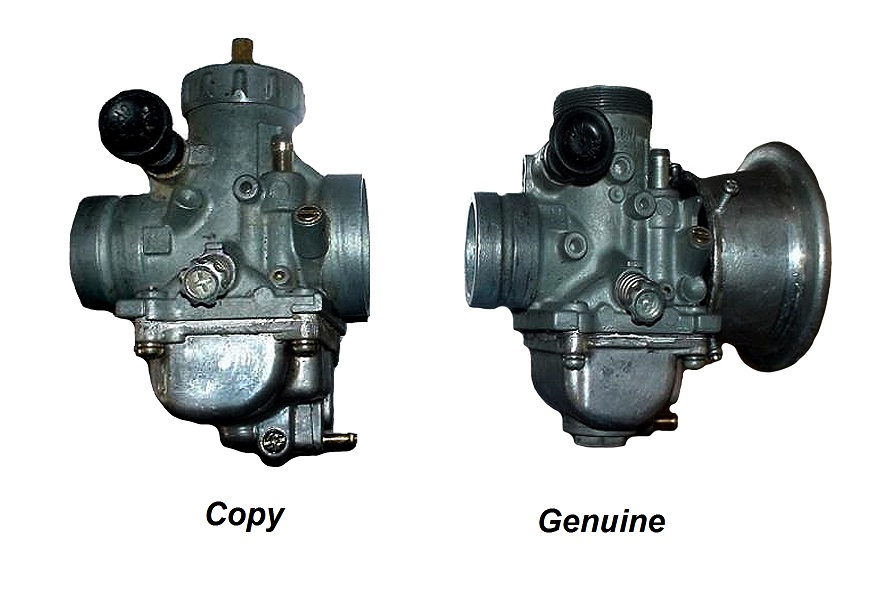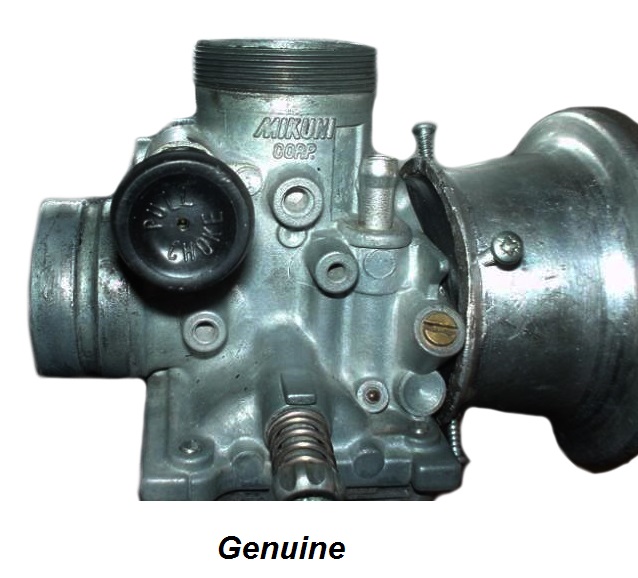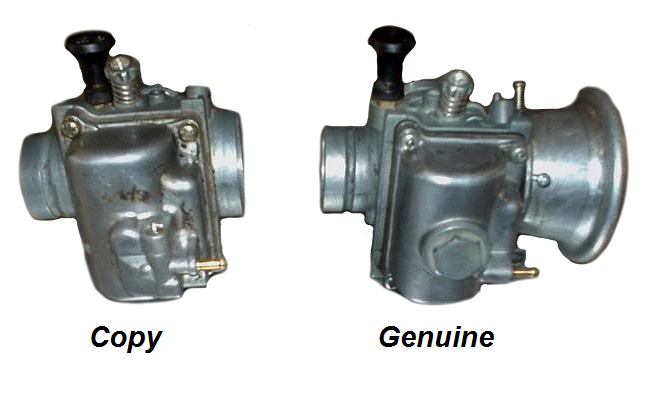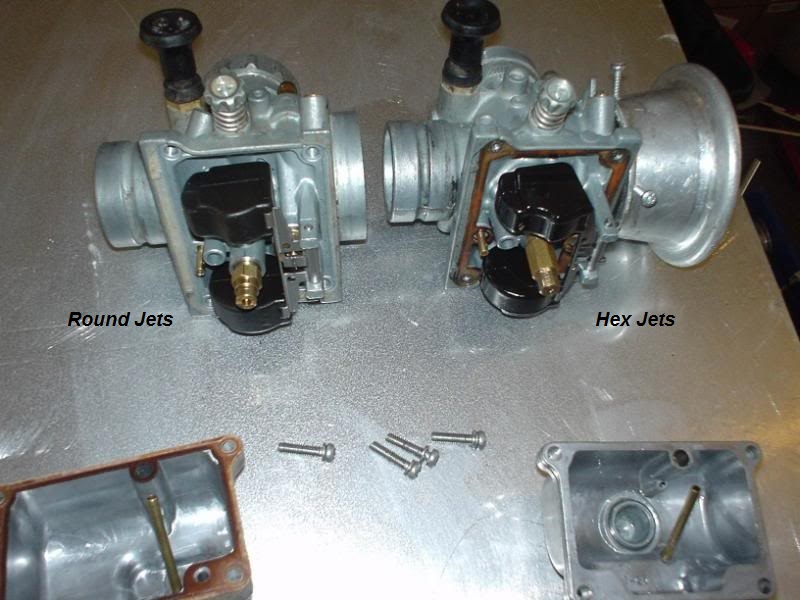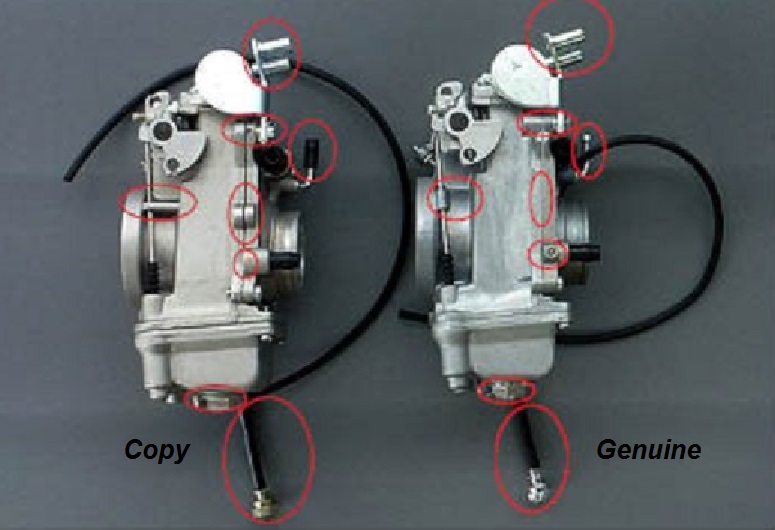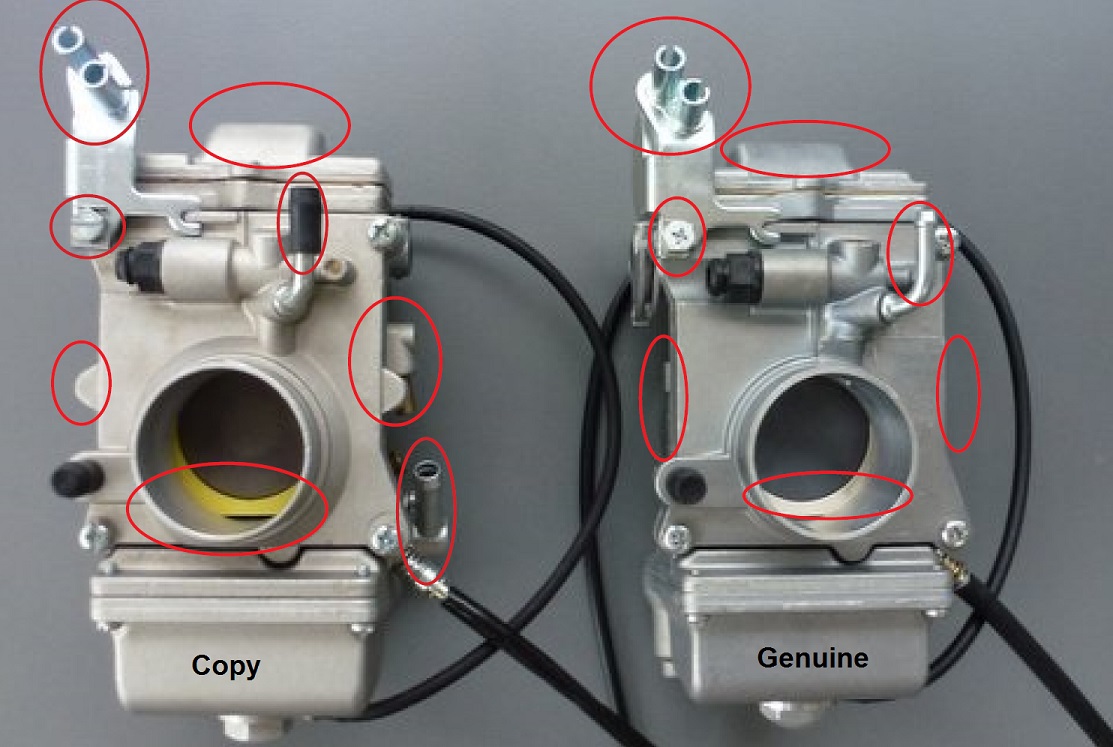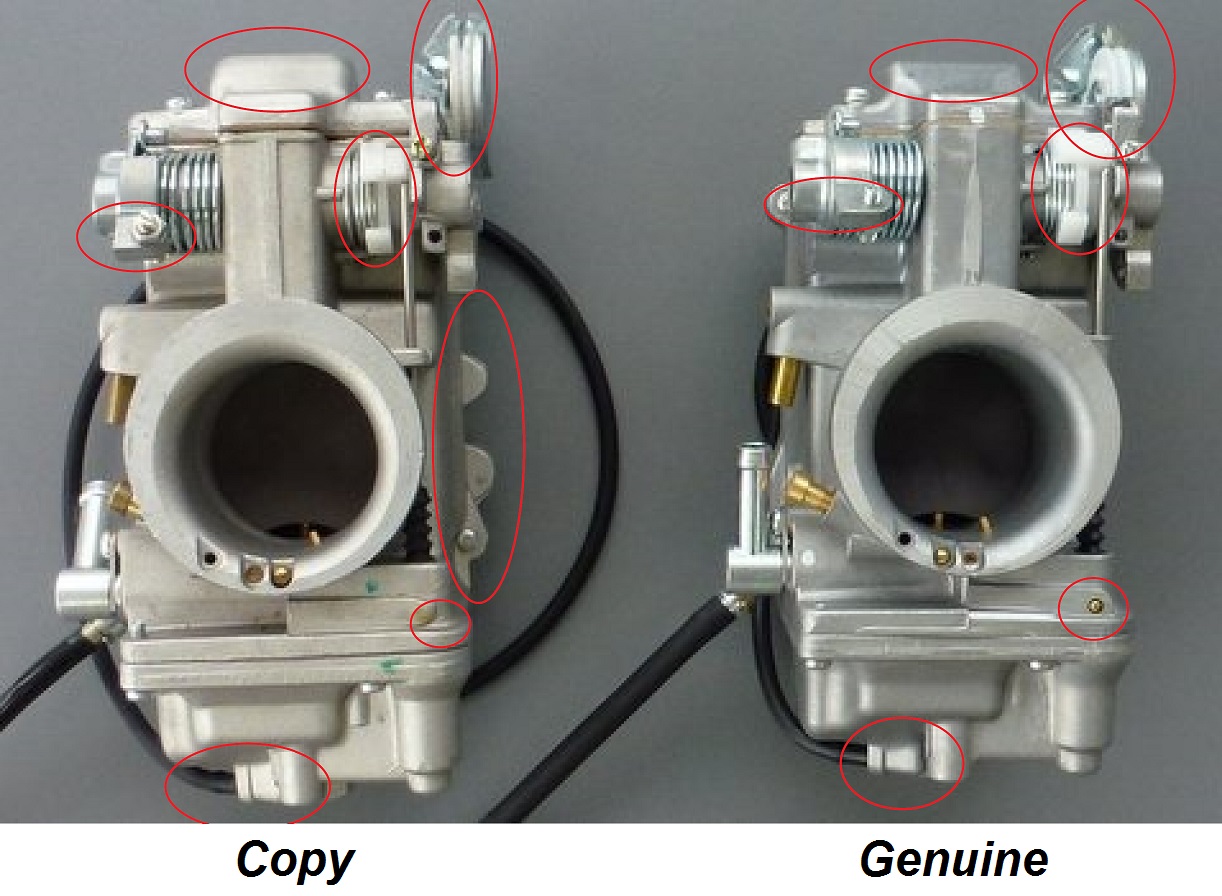There are plenty of Mikuni and Keihin carburetors in the market are not authentic. They're not safe to use and will cause many problems to your bike. If you think you've made a purchase and you're not sure if it's a genuine carburetor, here are some tips that will help you to identify them.
Mikuni VM
The genuine carburetor has the name on the choke side while the fake carburetor has it on the other side. You can also see that the float bowls are different. The original VM has a cover for quick main jet access and it uses hex jets and not round jets. The copy has the emulsion tube in 2 parts with the o-ring between them.
Click on the image to view larger
Mikuni HSR
You can see the top cover has a different design compared to the genuine. Also you can see that the idle adjuster screw on the genuine is thicker and shorter from the copy. The genuine carburetor doesn’t have a rubber cap on the fuel joint and the fuel joint is not straight is a slanted towards the back. The bracket is slightly different.
Click on the image to view larger
Keihin PWK
Genuine PWK:
A serial number is lightly imprinted below the PWK mark. The hoses should be a dark pink PLAS TECH hose.
A “Motorcycle Race Use Only” label will be placed below the Keihin logo. Also various Quality Control marks should be visible.
Genuine Keihin Jets should also have the jet size imprinted to the jet.
Click on the image to view larger
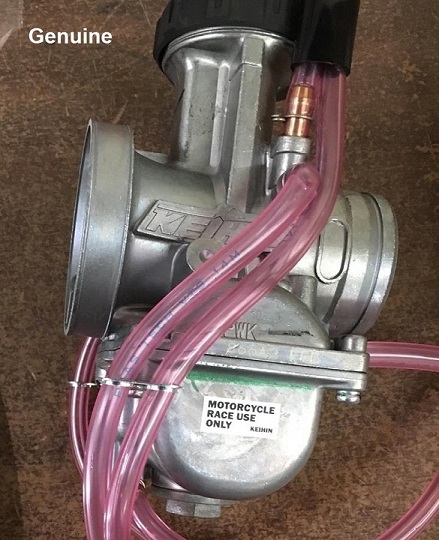
Copy PWK:
A copy of the PWK carburetor will have an unmarked light hose. The serial number will be darker than the genuine carburetor.
There’s no label indicating that the carburetor is for “Motorcycle Race Use Only” and a misspelled “Sudco” decal is instead placed below the Keihin logo.
You will also notice that there won’t be any black, green, and orange Quality Control marks. The jets and needles tend to be unmarked in these type of carburetors as well.
Click on the image to view larger
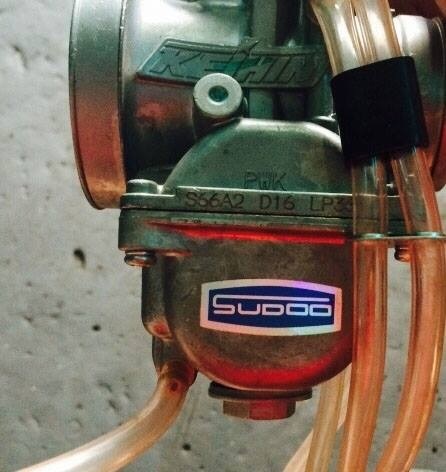

Some products are not legal for sale or use in California on any pollution controlled vehicle. These products include: Carburetors and Carburetor Rebuild Kits, Replacement Carburetor Jetting, Fuel Injection modules and Ignition Tuning Modules, and Aftermarket Exhaust Systems. Please contact us with any questions regarding the legality of non-original replacement parts.

